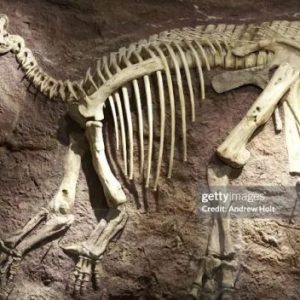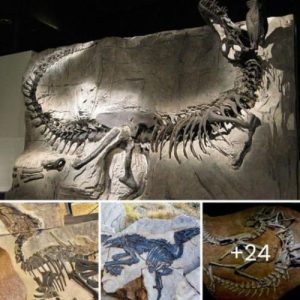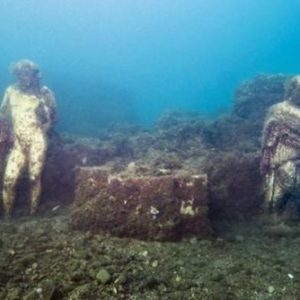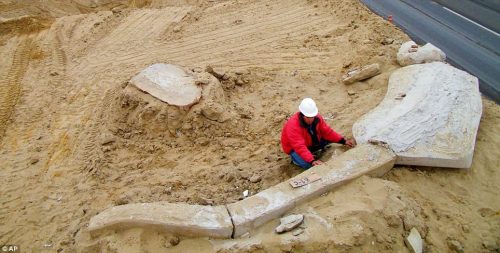
In a world filled with captivating mysteries and astonishing discoveries, the recent unearthing of a desert cemetery containing the fossils of 75 giant whales has left scientists and enthusiasts alike in awe. This astonishing find challenges our understanding of Earth’s history and offers a unique opportunity to explore the ancient marine world that once existed in what is now a seemingly arid landscape.
The Whales Beneath the Desert:
Located in the heart of a seemingly desolate desert, this extraordinary cemetery reveals a story of life and death that dates back millions of years. The presence of giant whale fossils in a desert environment raises countless questions about Earth’s ever-changing landscapes and the creatures that once inhabited them.
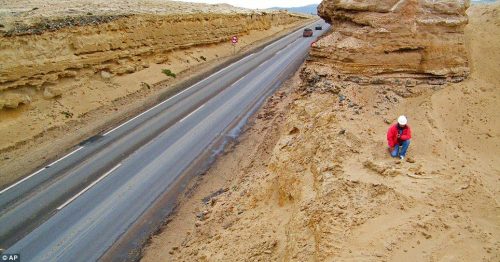
- The Geological Mysteries:
The first puzzle that scientists have had to solve is the geological history of the region. How did this area transform from an ancient seabed into a barren desert? To answer this, researchers are meticulously examining the layers of sediment and rock surrounding the fossilized whales. By conducting radiometric dating and sediment analysis, they hope to piece together the puzzle of how and when these marine giants met their fate.
- Uncovering a Lost Ocean:
The presence of whale fossils in the desert hints at a past that is nothing short of astonishing. Scientists believe that, millions of years ago, the desert we see today was once the floor of a vast prehistoric ocean. As the Earth’s tectonic plates shifted, the ocean retreated, leaving behind a fascinating record of life that thrived in this underwater world.
- Whales of the Past:
The fossils themselves provide a rare window into the past, allowing us to better understand the species that roamed this ancient ocean. The massive size of these whale fossils suggests they were likely filter-feeding giants, similar to the modern-day baleen whales. What did they eat, and how did they interact with their environment? These are some of the questions that researchers are eager to answer.
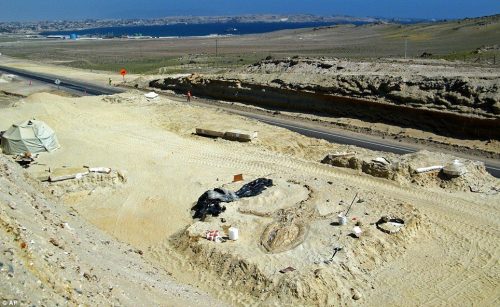
- Mass Mortality Event:
The discovery of 75 whale fossils in one location is particularly intriguing. It suggests a mass mortality event, raising questions about the possible causes. Did a catastrophic event, such as a massive underwater volcanic eruption, a sudden shift in ocean currents, or a deadly toxic algal bloom, wipe out these creatures? Unraveling the cause of their demise will shed light on the ancient environmental challenges they faced.
- The Science of Paleontology:
This remarkable find showcases the vital role that paleontology plays in understanding Earth’s history. The study of fossils allows scientists to reconstruct ancient ecosystems, track evolutionary changes, and explore the interactions between species. The desert cemetery of giant whales is a testament to the patience and dedication of paleontologists who work tirelessly to piece together Earth’s past.

The discovery of a desert cemetery containing the fossils of 75 giant whales is a testament to the wonders of the natural world and the relentless pursuit of knowledge by scientists. This remarkable find offers a unique opportunity to unravel the geological, ecological, and paleontological mysteries of the past.
As researchers delve deeper into the story of these ancient marine giants, we are sure to gain valuable insights into the history of our planet and the incredible creatures that once roamed its oceans. The desert, once perceived as lifeless, has now revealed its secrets, opening a new chapter in the ever-evolving narrative of Earth’s history.



